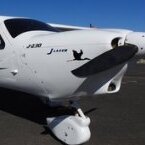This was only 2 or 3 aircraft in circuit total .
I've been in circuit with 4 other student/instructor PA28s without issue , (plus 2 x twin inbound !) , and everybody was making calls on every sector, no issue, everybody flying with the required position and awareness. It's tight , everyone is on their toes, but we all manage. This was likely at the end of the student intake where there is a bit of experience . Often one plane decides it's too much and goes and does an orbit etc , as if someone does a full stop, that jams of the runway for the next close aircraft.....
This situation occurred with the students in their first few hours of flying experience, so while this is a specific situation, I think we need a generalized solution. One of my circuits I went a little wider and extended to downwind to get some spacing.
So, something will need to change in the procedures to satisfy me from this point onward . Now, I could have slowed right down to give the aircraft in front that was seen to be wayward in their circuits for several circuits, but the 2nm separation should have been enough . Their crosswind must have been extra deep and perhaps their upwind extended.
Would a downwind call by the student aircraft have prevented this ?
No, probably not if I was early downwind and they were late (wide) downwind.
Only a inflexion point call would have given position info- IE TURNING base, TURNING downwind. That provides more info.
But in this case if I had heard a TURNING BASE call, I wouldnt have seen them into the sky I was looking into . I might have become a bit concerned when looking for them on base BUT you need to be flying your own aircraft also...... (I was looking for them late base when they came across my nose) So think this comes back to flying accurate circuits . Circuits always will vary a bit but this was a case where all the aircraft are PA28s of some sort. Wasnt like there was a twin trainer doing circuits amongst us, that usually messes things u a bit , but is rare. They are doing different training. I'll also look at my legal obligations to make a report, and whether I see any benefit to others doing this, since I think this can be mitigated with better procedures. I'll be at the airfield tomorrow.



